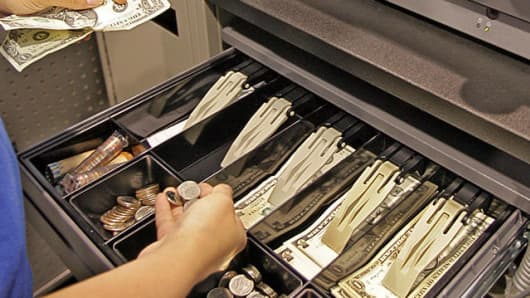Friday, economists expect the Commerce Department to report the economy grew 1.9 percent in the third quarter, continuing a subpar recovery that began in July 2009.
Consumer spending has been slowed by concerns about the effectiveness of President Obama's economic policies and pessimism about future improvements. The President leads in polls in most swing states, and has made clear his intention to double down on economic policies of the last four years.
The huge trade deficit continues to drag on demand for U.S. good and services and limit jobs creation. Administration curbs on domestic oil production and failure to address Chinese currency manipulation—the principal causes of the gapping $525 billion dollar trade deficit—blow a huge hole in domestic demand, slow growth and pose the threat of a second recession.
The likely end to temporary payroll tax reductions and Bush era tax cuts for families over $250,000 will only exacerbate these problems.
The President inherited an economic mess but so too did Ronald Reagan. During Mr. Reagan's first term, unemployment peaked at 10.8 percent in contrast to 10 percent during Mr. Obama's tenure.
Mr. Reagan cut taxes, followed through on deregulation initiated by President Carter, and put his bets on the private sector—encouraged domestic energy development and private investment. When the Gipper faced the voters, the economy was growing at 6.3 percent.
Mr. Obama has shut down much offshore and Alaskan oil production, invested in failing alternative energy projects, and emphasized heavy regulation and state direction of the economy—his growth rate during the current recovery is 2.2 percent. That is hardly enough to accommodate productivity and population growth, and certainly not enough to put many millions of jobless Americans back to work.
(Read More: End to Payroll Tax Holiday May Weigh on Economy)
During Mr. Reagan's first term, optimism caused more Americans to seek jobs. The percentage of adults participating in the labor force rose and unemployment fell to 7.3 percent by Election Day.
Since Mr. Obama took office, record numbers of Americans have become discouraged and quit looking for work, and the unemployment rate has not fallen nearly as much as it did for Mr. Reagan. It stands at 7.8 percent and few economists expected it to fall much further.
(Read More: 'No Reason We Can't Resolve' Fiscal Cliff: GE's Immelt)
The unemployment rate has been lowered mostly by folks quitting the job market altogether. If the adult labor force participation rate was the same today as when the recovery began, unemployment would stand at about 9.7 percent. Adding in folks relegated to part time work, but who would prefer full time positions, the jobless rate jumps to 14.7 percent.
The difference is plain. Mr. Reagan acted to unleash the creative energies of the private sector, while Mr. Obama has moved in the opposite direction.
Moreover, most of Mr. Obama's successful efforts have been focused to reward his 2008 supporters—unionized industries in the Middle West such as autos and overly generous bank bailouts—and swing states. Consequently, he has likely moved into his column conservative Iowa—normally Republican state in close national contests—with generous subsidies for wind farms and ethanol—and erected a firewall against a Romney electoral college majority in Ohio—a state where one of every eight workers benefits from generous subsidies to GM and Chrysler.
America is all about private enterprise, and without leadership that believes in the primacy of the private sector, it can't succeed. Targeted federal giveaways may be good Electoral College politics but won't win Mr. Obama a place in history for the quality and success of his economic stewardship.
Peter Morici is a professor at the Smith School of Business, University of Maryland, and former Chief Economist at the U.S. International Trade Commission.


